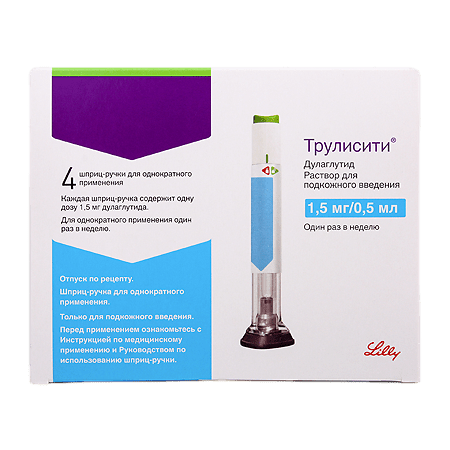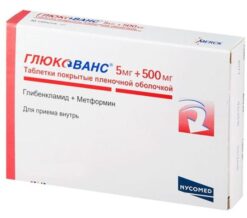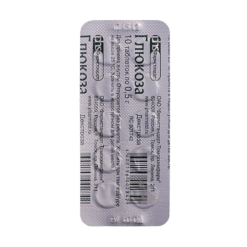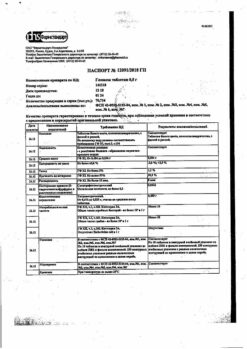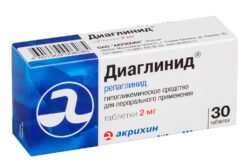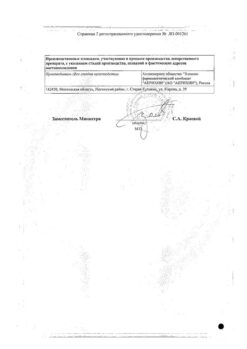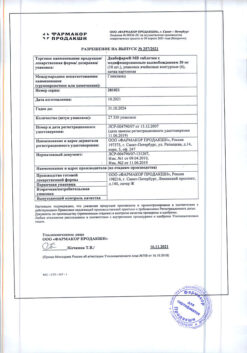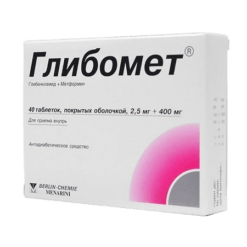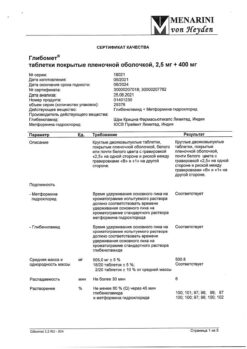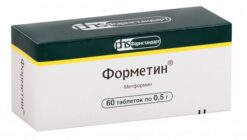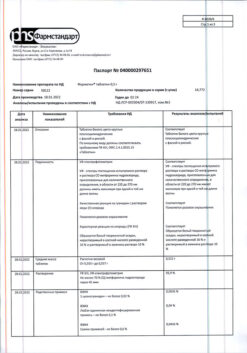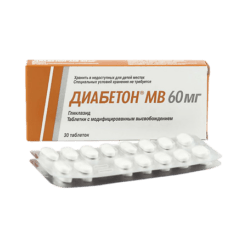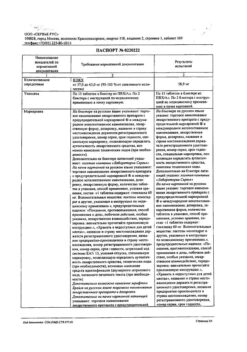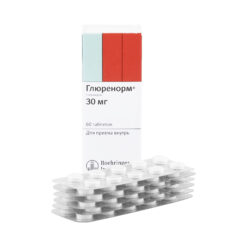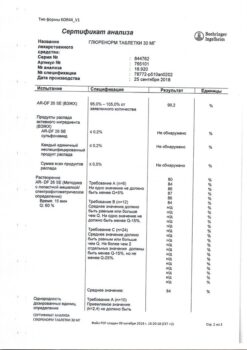No products in the cart.
Trulicity, 1.5 mg/0.5 ml 0.5 ml syringes in syringe pens 4 pcs
€1.00
Out of stock
(E-mail when Stock is available)
Description
Hypoglycemic agent is an analogue of glucagon-like peptide-1 (GFP-1).
ATX code: A10BJ05
Pharmacological properties
.Mechanism of action
Dulaglutide is a long-acting GFP-1 receptor agonist. Its molecule consists of two identical chains linked by disulfide bonds, each containing a modified human GFP-1 analog covalently linked to a heavy chain (Fc) fragment of modified human immunoglobulin G4 (IgG4) via a small polypeptide chain. The dulaglutide portion, which is analogous to GFP-1, is approximately 90% homologous to native human GFP-1. The half-life (t1/2) of native human GFP-1 is 1.5-2 min due to cleavage by dipeptidyl peptidase-4 (DPP-4) and renal clearance. Unlike native GFP-1, dulaglutide is resistant to cleavage by DPP-4 and has a large size, which slows absorption and reduces renal clearance. These structural features provide a soluble form and a half-life of 4.7 days, making it suitable for subcutaneous (p/k) administration once a week. In addition, the dulaglutide molecule was designed to prevent the Fcγ receptor-mediated immune response and reduce the immunogenic potential.
The hypoglycemic effect of dulaglutide is due to several mechanisms of action of GFP-1. At elevated glucose concentrations, dulaglutide increases intracellular cyclic adenosine monophosphate (cAMP) in pancreatic beta cells, resulting in increased insulin secretion. Dulaglutide suppresses excessive glucagon secretion in patients with type 2 diabetes mellitus (DM2), which leads to a decrease in glucose release by the liver. In addition, dulaglutide slows the rate of gastric emptying.
Pharmacodynamics
. In patients with DM2, starting with the first administration, dulaglutide improves glycemic control by steadily reducing blood glucose concentrations on an empty stomach, before meals and after meals, which is maintained for a week until the next dose is administered.
A pharmacodynamic study of dulaglutide showed that in patients with DM2 there was a recovery of first-phase insulin secretion to values greater than those of healthy volunteers receiving placebo, and improvement of second-phase insulin secretion in response to intravenous bolus infusion of dextrose (glucose) solution. The same study also showed that a single dose of 1.5 mg of dulaglutide increased maximum pancreatic β-cell insulin secretion and improved β-cell function in DM2 patients compared to placebo.
The pharmacokinetic profile and the corresponding pharmacodynamic profile of dulaglutide allow the drug to be administered once weekly.
Clinical efficacy and safety
Glycemic control
. The efficacy and safety of dulaglutide has been studied in clinical trials where dulaglutide has been used in monotherapy, in combination therapy with metformin, combination therapy with metformin and a sulfonylurea derivative, and combination therapy with a sulfonylurea derivative, combination therapy with a type 2 sodium-dependent glucose transporter inhibitor (SGLT2i) with or without metformin, combination therapy with metformin and pioglitazone, combination therapy with titrated basal insulin with or without metformin, combination therapy with prandial insulin with or without metformin.
In all studies, dulaglutide provided clinically meaningful improvement in glycemic control as assessed by glycated hemoglobin (HbA1c).
Baseline blood glucose concentration
The use of dulaglutide resulted in a significant decrease in fasting blood glucose concentration compared to baseline. The main effect on fasting blood glucose concentration was observed after 2 weeks. The improvement in fasting blood glucose concentration was maintained over the longest study period of 104 weeks.
Blood glucose concentration after meals (postprandial glycemia)
. Use of dulaglutide resulted in a significant reduction in mean postprandial glycemia compared with baseline (change in glycemia from baseline to the primary time point was -1.95 mmol/L to
-4.23 mmol/L).
Pancreatic beta cell function
. Results of clinical studies have shown improvement in pancreatic beta-cell function with dulaglutide, as determined by a homeostatic evaluation model (HOMA2-%B index). The effect on beta-cell function persisted for the longest study period of 104 weeks.
Body weight
. When dulaglutide was administered at a dose of 1.5 mg once weekly, there was a sustained decrease in body weight over the course of the studies (change from baseline was -0.35 kg to -2.90 kg at the final time point). The change in body weight with dulaglutide at a dose of 0.75 mg once weekly ranged from 0.86 kg to -2.63 kg. The decrease in body weight was observed in patients who received dulaglutide regardless of the occurrence of nausea, although numerically the decrease was greater in the group of patients who had nausea.
Results based on patient survey
Dulaglutide significantly improved overall satisfaction with therapy.
Arterial pressure (BP)
The effect of dulaglutide on BP was evaluated in a study involving patients with DM2 using ambulatory BP monitoring. Dulaglutide therapy was accompanied by a decrease in systolic BP (-2.8 mmHg difference compared to placebo) after 16 weeks. No difference in diastolic BP was observed. Similar results for systolic and diastolic BP were shown at the study endpoint of 26 weeks.
Cardiovascular Impact Assessment
. Results of a meta-analysis of phase II and III studies showed that dulaglutide did not increase the risk of cardiovascular events compared with therapy with comparison drugs.
In a long-term cardiovascular outcome study, Trulicity® significantly reduced the risk of serious cardiovascular complications compared with placebo. The incidence of serious cardiovascular complications (cardiovascular death, nonfatal myocardial infarction, and nonfatal stroke) was lower in patients treated with dulaglutide, both those with cardiovascular disease and those with risk factors but no diagnosed cardiovascular disease, than in patients in the placebo group. The relative risk of serious cardiovascular complications was consistently lower than 1.00 for all three serious cardiovascular complications.
The use of Trulicity® in addition to standard therapy compared to placebo showed a significant and sustained decrease in HbA1c after 60 months compared to baseline. The drug Trulicity® demonstrated stable efficacy in major population subgroups and disease subgroups, including prior cardiovascular disease stage, baseline HbA1c, gender, duration of diabetes, age and glomerular filtration rate (GFR).
Special patient groups
Patients with renal impairment
. In a 52-week study, dulaglutide at doses of 1.5 mg and 0.75 mg was compared with insulin glargine as an adjunct to prandial insulin lispro to evaluate the effect on glycemic control and safety in patients with mild to severe renal impairment (15 mL/min/1.73 m2 ≤ SCF < 60 mL/min/1.73 m2).
After 26 weeks of therapy, dulaglutide at doses of 1.5 mg and 0.75 mg was not inferior to insulin glargine in reducing HbA1c, with the effect persisting for 52 weeks. The proportion of patients achieving target HbA1c < 8.0% at weeks 26 and 52 was similar with dulaglutide at both doses and with insulin glargine.
The safety profile of dulaglutide in patients with severe renal impairment was similar to that seen in other studies of dulaglutide.
.Pharmacokinetics
absorption <./p>
After p/u administration to patients with type 2 DM2, the maximum concentration (Cmax) of dulaglutide in plasma is observed after 48 h. Following multiple p/c administration of dulaglutide at a dose of 1.5 mg to DM2 patients, the mean Cmax and area under the concentration-time curve (AUC) were approximately 114 ng/mL and 14,000 ng/h/mL, respectively. Equilibrium plasma concentrations were observed after 2-4 weeks of dulaglutide administration at a dose of 1.5 mg once weekly. Concentrations after a single dose of dulaglutide (1.5 mg) administered p/c to the abdomen, thigh, or shoulder were comparable. The mean absolute bioavailability of dulaglutide after a single per oral dose of 1.5 mg or 0.75 mg was 47% and 65%, respectively.
Distribution
After p/k administration of dulaglutide at doses of 0.75 mg or 1.5 mg to patients with DM2 at equilibrium, the mean volume of distribution was approximately 19.2 L and 17.4 L, respectively.
Metabolism
Dulaglutide is thought to be broken down into its component amino acids through the major protein catabolic pathways.
Elevation
The average clearance of dulaglutide in humans in equilibrium after administration at
doses of 0.75 mg or 1.5 mg was 0.111 L/h and 0.107 L/h, respectively, with half-lives of
4.5 and 4.7 days, respectively.
Pharmacokinetics of dulaglutide in special patient groups
In elderly patients .
Patient age had no clinically significant effect on the pharmacokinetic and pharmacodynamic properties of dulaglutide.
Gender and race
Gender and race had no clinically significant effect on the pharmacokinetics of dulaglutide.
body weight or body mass index
. Pharmacokinetic analysis showed a statistically significant inverse relationship between body weight or body mass index (BMI) and dulaglutide exposure; however, there was no clinically significant effect of body weight or BMI on glycemic control.
In patients with renal impairment
. The pharmacokinetics of dulaglutide were evaluated in a clinical-pharmacological study and were generally similar in healthy participants and in patients with mild to severe renal impairment (creatinine clearance < 30 mL/min), including terminal renal failure (while undergoing hemodialysis). Additionally, in a 52-week clinical trial involving patients with DM2 and moderate to severe renal impairment (15 mL/min/1.73 m2 ≤ SCF < 60 mL/min/1.73 m2) the pharmacokinetics profile of dulaglutide at 0.75 mg and 1.5 mg once weekly was similar to that seen in other studies of dulaglutide. This study did not include patients with end-stage renal failure.
In patients with hepatic impairment
. The pharmacokinetics of dulaglutide were evaluated in a clinical and pharmacological study in which patients with hepatic impairment showed statistically significant decreases in mean Cmax and AUC of 30% and 33%, respectively, compared with healthy volunteers. The time to reach Cmax (tmax) of dulaglutide increased when liver function worsened. Exposure to dulaglutide was independent of the degree of liver failure. These changes were not considered clinically significant.
In children and adolescents under 18 years of age
There have been no studies of the pharmacokinetics of dulaglutide in children and adolescents under 18 years of age.
Indications
Indications
Trulicity® is indicated for adult patients with type 2 diabetes mellitus with insufficient glycemic control during diet and exercise in the form of:
monotherapy
in patients for whom the use of metformin is not indicated due to intolerance or contraindications;
combination therapy
in combination with other drugs for the treatment of diabetes mellitus.
Trulicity® is indicated to reduce the risk of serious cardiovascular complications (death due to cardiovascular pathology, non-fatal myocardial infarction, non-fatal stroke)
in adult patients with type 2 diabetes mellitus and multiple cardiovascular risk factors without diagnosed cardiovascular disease;
in adult patients with type 2 diabetes mellitus and established cardiovascular disease as an adjunct to standard therapy for cardiovascular disease.
Pharmacological effect
Pharmacological effect
The hypoglycemic agent is an analogue of glucagon-like peptide-1 (GLP-1).
ATX code: A10BJ05
Pharmacological properties
Mechanism of action
Dulaglutide is a long-acting GLP-1 receptor agonist. Its molecule consists of two identical chains linked by disulfide bonds, each containing a modified human GLP-1 analog covalently linked to the heavy chain (Fc) fragment of modified human immunoglobulin G4 (IgG4) via a small polypeptide chain. The GLP-1 analog portion of dulaglutide is approximately 90% homologous to native human GLP-1. The half-life (t1/2) of native human GLP-1 due to cleavage by dipeptidyl peptidase-4 (DPP-4) and renal clearance is 1.5-2 minutes. Unlike native GLP-1, dulaglutide is resistant to degradation by DPP-4 and is large in size, which slows absorption and reduces renal clearance. These structural features provide a soluble form and a half-life of 4.7 days, making the drug suitable for subcutaneous (SC) administration once a week. In addition, the dulaglutide molecule was designed to prevent Fcγ receptor-mediated immune responses and reduce immunogenic potential.
The hypoglycemic effect of dulaglutide is due to several mechanisms of action of GLP-1. With increased glucose concentrations, dulaglutide increases the content of intracellular cyclic adenosine monophosphate (cAMP) in the beta cells of the pancreas, which leads to increased insulin secretion. Dulaglutide suppresses excess glucagon secretion in patients with type 2 diabetes mellitus (T2DM), resulting in decreased hepatic glucose output. In addition, dulaglutide slows the rate of gastric emptying.
Pharmacodynamics
In patients with T2DM, starting with the first dose, dulaglutide improves glycemic control through a sustained reduction in fasting, preprandial and postprandial blood glucose concentrations, which is maintained for a week before the next dose.
A pharmacodynamic study of dulaglutide showed that in patients with T2DM there was a restoration of the first phase of insulin secretion to values exceeding those of healthy volunteers receiving placebo, and an improvement in the second phase of insulin secretion in response to an intravenous bolus of dextrose (glucose) solution. The same study also showed that a single dose of dulaglutide 1.5 mg increased maximal pancreatic β-cell insulin secretion and improved β-cell function in patients with T2DM compared with placebo.
The pharmacokinetic profile and corresponding pharmacodynamic profile of dulaglutide allow the drug to be administered once a week.
Clinical efficacy and safety
Glycemic control
The efficacy and safety of dulaglutide was studied in clinical studies where dulaglutide was used as monotherapy, in combination therapy with metformin, combination therapy with metformin and a sulfonylurea, combination therapy with a sulfonylurea, combination therapy with a sodium glucose transporter type 2 inhibitor (SGLT2i) with or without metformin, combination therapy with metformin and pioglitazone, combination therapy with titrated basal insulin with or without metformin, combination therapy with prandial insulin with or without metformin.
In all studies, dulaglutide provided a clinically significant improvement in glycemic control, as measured by glycated hemoglobin (HbA1c).
Fasting blood glucose concentration
The use of dulaglutide led to a significant decrease in fasting blood glucose concentration compared to the baseline value. The main effect on fasting blood glucose concentrations was observed after 2 weeks. Improvements in fasting blood glucose concentrations were maintained throughout the longest study period, 104 weeks.
Blood glucose concentration after meals (postprandial glycemia)
The use of dulaglutide led to a significant decrease in mean postprandial glycemia compared with baseline (change in glycemia from baseline to primary time point ranged from -1.95 mmol/l to
-4.23 mmol/l).
Pancreatic beta cell function
The results of clinical studies showed an improvement in pancreatic beta cell function with dulaglutide, as determined by the homeostatic assessment model (HOMA2-%B index). The effect on beta cell function was maintained over the longest period of the study, 104 weeks.
Body weight
When using dulaglutide at a dose of 1.5 mg once a week, there was a steady decrease in body weight throughout the studies (the change from the initial value ranged from -0.35 kg to -2.90 kg at the final time point). Changes in body weight when using dulaglutide at a dose of 0.75 mg once a week ranged from 0.86 kg to -2.63 kg. Weight loss was observed in patients who received dulaglutide regardless of the occurrence of nausea, although the decrease was greater in the group of patients who experienced nausea.
Results based on patient survey
Dulaglutide significantly improved overall satisfaction with treatment.
Blood pressure (BP)
The effect of dulaglutide on BP was assessed in a study in patients with T2DM using ambulatory BP monitoring. Dulaglutide therapy was associated with a reduction in systolic blood pressure (difference -2.8 mmHg compared to placebo) after 16 weeks. No difference in diastolic blood pressure was observed. Similar results for systolic and diastolic blood pressure were shown at the study end point of 26 weeks.
Assessment of the effect on the cardiovascular system
The results of a meta-analysis of phase II and III studies showed that the risk of cardiovascular events was not increased with dulaglutide compared with treatment with comparator drugs.
In a long-term cardiovascular outcomes study, Trulicity® significantly reduced the risk of major cardiovascular events compared with placebo. In patients receiving dulaglutide, both with cardiovascular disease and in patients with risk factors but without diagnosed cardiovascular disease, the incidence of major cardiovascular events (cardiovascular death, non-fatal myocardial infarction, non-fatal stroke) was lower than in patients in the placebo group. The relative risk of major cardiovascular events was consistently below 1.00 for all three major cardiovascular events.
When using Trulicity® in addition to standard therapy compared with placebo, a significant and stable reduction in HbA1c was observed after 60 months compared to baseline. Trulicity demonstrated consistent efficacy across key population and disease subgroups, including previous cardiovascular disease stage, baseline HbA1c, gender, duration of diabetes, age and glomerular filtration rate (GFR).
Special patient groups
Patients with renal failure
A 52-week study compared dulaglutide 1.5 mg and 0.75 mg with insulin glargine as an adjunct to prandial insulin lispro to evaluate the effect on glycemic control and safety in patients with moderate to severe renal impairment (15 mL/min/1.73 m2 ≤ GFR < 60 mL/min/1.73 m2).
After 26 weeks of therapy, dulaglutide at doses of 1.5 mg and 0.75 mg was not inferior to insulin glargine in reducing HbA1c, and the effect was maintained for 52 weeks. The proportion of patients achieving target HbA1c <8.0% at weeks 26 and 52 of therapy was similar between dulaglutide at both doses and insulin glargine.
The safety profile of dulaglutide in patients with severe renal impairment was similar to that observed in other studies of dulaglutide.
Pharmacokinetics
Suction
After subcutaneous administration to patients with type 2 diabetes, the maximum concentration (Cmax) of dulaglutide in plasma is observed after 48 hours. After repeated subcutaneous administration of dulaglutide at a dose of 1.5 mg to patients with type 2 diabetes, the average Cmax and area under the concentration-time curve (AUC) were approximately 114 ng/ml and 14,000 ng/ml, respectively. Steady-state plasma concentrations were observed after 2-4 weeks of administration of dulaglutide at a dose of 1.5 mg once a week. Concentrations following subcutaneous administration of a single dose of dulaglutide (1.5 mg) to the abdomen, thigh, or upper arm were comparable. The mean absolute bioavailability of dulaglutide after a single subcutaneous dose of 1.5 mg or 0.75 mg was 47% and 65%, respectively.
Distribution
After subcutaneous administration of dulaglutide at doses of 0.75 mg or 1.5 mg to patients with T2DM at steady state, the mean volume of distribution was approximately 19.2 L and 17.4 L, respectively.
Metabolism
Dulaglutide is thought to be broken down into its component amino acids via the major protein catabolic pathway.
Removal
The average clearance of dulaglutide in humans at steady state after administration
doses of 0.75 mg or 1.5 mg was 0.111 l/h and 0.107 l/h, respectively, with a period
elimination half-life is 4.5 and 4.7 days, respectively.
Pharmacokinetics of dulaglutide in special groups of patients
In elderly patients
The patient’s age did not have a clinically significant effect on the pharmacokinetic and pharmacodynamic properties of dulaglutide.
Gender and race
Gender and race did not have a clinically significant effect on the pharmacokinetics of dulaglutide.
Body weight or body mass index
Pharmacokinetic analysis showed a statistically significant inverse relationship between body weight or body mass index (BMI) and dulaglutide exposure, however, there was no clinically significant effect of body weight or BMI on glycemic control.
In patients with renal failure
The pharmacokinetics of dulaglutide were assessed in a clinical pharmacological study and were generally similar in healthy participants and in patients with mild to severe renal impairment (creatinine clearance <30 mL/min), including end-stage renal disease (on hemodialysis). Additionally, in a 52-week clinical study in patients with T2DM and moderate to severe renal impairment (15 mL/min/1.73 m2 ≤ GFR < 60 mL/min/1.73 m2), the pharmacokinetic profile of dulaglutide 0.75 mg and 1.5 mg once weekly was similar to that observed in other studies of dulaglutide. This study did not include patients with end-stage renal disease.
In patients with liver failure
The pharmacokinetics of dulaglutide were evaluated in a clinical pharmacological study in which a statistically significant reduction in mean Cmax and AUC values of 30% and 33%, respectively, was observed in patients with hepatic impairment compared with healthy volunteers. With deterioration of liver function, the time to reach Cmax (tmax) of dulaglutide increased. Exposure to dulaglutide was independent of the degree of liver failure. These changes were not considered clinically significant.
In children and adolescents under 18 years of age
Pharmacokinetic studies of dulaglutide have not been conducted in children and adolescents under 18 years of age.
Special instructions
Special instructions
Dulaglutide is contraindicated for use in patients with type 1 diabetes mellitus or for the treatment of diabetic ketoacidosis. Dulaglutide is not a replacement for insulin. Cases of diabetic ketoacidosis have been reported in insulin-dependent patients after rapid discontinuation or reduction of insulin dosage.
Dehydration
Dehydration, sometimes leading to acute renal failure or deterioration of renal function, has been reported in patients treated with Trulicity®, especially early in treatment. A variety of renal adverse events have been observed in patients with a history of nausea, vomiting, diarrhea, or dehydration. Patients receiving therapy with Trulicity should be informed of the possible risk of dehydration, especially in connection with gastrointestinal adverse reactions, and precautions should be taken to avoid hypovolemia.
The use of dulaglutide in patients with severe gastrointestinal diseases, including severe gastroparesis, has not been studied, therefore the drug is contraindicated in this cohort of patients.
Acute pancreatitis
The use of GLP-1 receptor agonists is associated with a risk of developing acute pancreatitis. Cases of acute pancreatitis associated with dulaglutide therapy have been reported in clinical studies.
Patients should be informed of the characteristic symptoms of acute pancreatitis, including persistent severe abdominal pain. If pancreatitis is suspected, dulaglutide therapy should be discontinued. If the diagnosis of pancreatitis is confirmed, dulaglutide should be discontinued without restarting therapy. In the absence of other signs and characteristic symptoms of acute pancreatitis, increased activity of pancreatic enzymes in itself is not a prognostic factor for acute pancreatitis.
If the patient has a history of pancreatitis, therapy with other hypoglycemic drugs should be considered.
Hypoglycemia
Patients receiving dulaglutide concomitantly with a sulfonylurea or insulin may have an increased risk of hypoglycemia. The risk of hypoglycemia can be reduced by reducing the dose of sulfonylurea or insulin.
CHF
Experience with the use of dulaglutide in patients with CHF is limited.
Dulaglutide should be used with caution in patients with functional class I or II CHF (according to the NYHA classification).
Acute renal failure
During post-marketing experience with GLP-1 receptor agonists, including dulaglutide, cases of acute renal failure and worsening chronic renal failure requiring hemodialysis have been reported. Some of these events have been reported in patients without diagnosed kidney disease. Most of the reported events occurred in patients experiencing nausea, vomiting, diarrhea, or dehydration. Since these reactions may worsen renal function, therapy should be prescribed with caution and the dose of the drug should be increased in patients with renal failure. Renal function should be monitored in patients with renal failure who report severe gastrointestinal adverse reactions.
Macrovascular complications
There are no clinical trial data confirming a reduction in the risk of developing macrovascular complications in patients with T2DM when using Trulicity®.
Risk of medullary thyroid cancer
Patients should be informed of the potential risk of medullary thyroid cancer with dulaglutide and the clinical symptoms of a thyroid tumor (enlarged tissue or nodules in the neck, shortness of breath, persistent hoarseness).
Sodium content
The drug contains less than 1 mmol sodium (23 mg) per 1.5 mg dose, i.e. Contains virtually no sodium.
Fertility
There are no data on the effect of dulaglutide on fertility in humans. In rats, no direct effects on mating or fertility were observed after administration of dulaglutide.
Influence on the ability to drive vehicles and machinery
Dulaglutide has minimal or no effect on the ability to drive vehicles and operate machinery. When using dulaglutide in combination with a sulfonylurea derivative or insulin, caution is recommended to avoid the development of hypoglycemia when driving vehicles and machinery.
Active ingredient
Active ingredient
Dulaglutide
Composition
Composition
0.5 ml of the drug contains:
For 1.5 mg dosage:
Active ingredient: dulaglutide 1.5 mg;
Excipients: anhydrous citric acid 0.07 mg; mannitol 23.2 mg; polysorbate 80 (vegetable) 0.10 mg; sodium citrate dihydrate 1.37 mg; water for injection q.s. up to 0.5 ml.
Pregnancy
Pregnancy
Pregnancy
There are no or limited data on the use of dulaglutide in pregnant women. Animal studies have shown reproductive toxicity and the use of dulaglutide is contraindicated during pregnancy.
Breast-feeding
There is no information on the penetration of dulaglutide into breast milk. A risk to newborns/infants cannot be excluded. The use of dulaglutide during breastfeeding is contraindicated.
Contraindications
Contraindications
hypersensitivity to dulaglutide or any of the excipients included in the drug;
type 1 diabetes mellitus;
diabetic ketoacidosis;
end-stage renal failure (GFR < 15 ml/min/1.73 m2);
chronic heart failure (CHF) functional class III or IV (according to the New York Heart Association, NYHA classification);
pregnancy;
breastfeeding period;
severe diseases of the gastrointestinal tract (GIT), incl. severe gastric paresis;
acute pancreatitis;
in patients with a personal or family history of medullary thyroid cancer
in patients with multiple endocrine neoplasia syndrome type 2;
age under 18 years (due to the lack of data on the effectiveness and safety of dulaglutide in this age group).
With caution
In patients taking oral medications that require rapid absorption from the gastrointestinal tract; in patients with CHF I and II functional class (according to the New York Heart Association, NYHA classification).
Side Effects
Side Effects
Security Profile Overview
The safety of dulaglutide was studied during initial phase II and III clinical studies, where patients received dulaglutide alone or in combination with other hypoglycemic drugs. The most common adverse reactions (ADRs) in clinical studies were gastrointestinal reactions, including nausea, vomiting and diarrhea. In general, these reactions were mild to moderate and temporary in nature. The results of the long-term cardiovascular outcome study were similar.
ADRs identified during the assessment of the results of clinical trials of phases II and III, a long-term study of cardiovascular outcomes and post-registration experience of use are distributed according to systemic classes indicating the frequency of their occurrence according to WHO recommendations: very often: ≥1/10; often: ≥1/100 – <1/10; uncommon: ≥1/1000 - <1/100; rare: ≥1/10000 - <1/1000; very rare: <1/10000; frequency unknown (cannot be determined from available data).
Immune system disorders: uncommon – hypersensitivity, rare – anaphylactic reaction#;
Metabolic and nutritional disorders: very often – hypoglycemia* when used in combination with insulin, glimepiride, metformin† or metformin and glimepiride; often – hypoglycemia* when used as monotherapy or in combination with metformin and pioglitazone; uncommon – dehydration;
Gastrointestinal disorders: very often – nausea, diarrhea, vomiting†, abdominal pain†; often – loss of appetite, dyspepsia, constipation, flatulence, bloating, gastroesophageal reflux disease, belching; rarely – acute pancreatitis; with unknown frequency – non-mechanical intestinal obstruction;
Disorders of the liver and biliary tract: infrequently – cholelithiasis, cholecystitis;
Disorders of the skin and subcutaneous tissue: rarely – angioedema;
General disorders and disorders at the injection site: often – weakness; uncommon – reactions at the injection site;
Laboratory and instrumental data: often – sinus tachycardia, first degree atrioventricular block.
# Post-registration experience of use
* Documented symptomatic hypoglycemia with blood glucose concentration ≤3.9 mmol/L.
†For dulaglutide 1.5 mg only. The incidence of adverse reactions for dulaglutide 0.75 mg is in the lower category.
Description of individual HP
Hypoglycemia
When dulaglutide was used in doses of 0.75 mg and 1.5 mg once a week as monotherapy or in combination with metformin or metformin and pioglitazone, the frequency of documented symptomatic hypoglycemia ranged from 5.9% to 10.9%, or from 0.14 to 0.62 events/patient/year, and there were no cases of severe hypoglycemia.
When dulaglutide was administered at doses of 0.75 mg and 1.5 mg once weekly in combination with a sulfonylurea and metformin, the incidence of documented symptomatic hypoglycemia was 39.0% and 40.3%, respectively, or 1.67 and 1.67 events/patient/year, respectively. The incidence of severe hypoglycemia events was 0% and 0.7%, or 0.00 and 0.01 events/patient/year, for each dose, respectively. The incidence of documented cases of symptomatic hypoglycemia when using dulaglutide 1.5 mg with a sulfonylurea was 11.3% and 0.90 episodes/patient/year. There were no cases of severe hypoglycemia.
The incidence of documented cases of symptomatic hypoglycemia when using dulaglutide 1.5 mg with insulin glargine was 35.3% and 3.38 episodes/patient/year. The incidence of severe hypoglycemia was 0.7% and 0.01 episodes/patient/year.
When dulaglutide was used at doses of 0.75 mg and 1.5 mg once a week in combination with prandial insulin, the incidence of hypoglycemia was 85.3% and 80.0%, or 35.66 and 31.06 events/patient/year, respectively. The incidence of severe hypoglycemia events was 2.4% and 3.4%, or 0.05 and 0.06 events/patient/year, respectively.
Adverse reactions from the gastrointestinal tract
Cumulative reporting of GI events up to 104 weeks with dulaglutide 0.75 mg and 1.5 mg once weekly, respectively, included nausea (12.9% and 21.2%), diarrhea (10.7% and 13.7%), and vomiting (6.9% and 11.5%). They were usually mild or moderate in severity, peaking in frequency during the first 2 weeks of therapy and decreasing rapidly over the next 4 weeks, after which the frequency remained relatively constant.
In clinical pharmacological studies that were conducted in patients with T2DM and lasted up to 6 weeks, most gastrointestinal events were observed within the first 2-3 days after taking the first dose, their frequency decreased with subsequent doses.
Acute pancreatitis
The incidence of acute pancreatitis in phase II and III clinical trials was 0.07% with dulaglutide compared with 0.14% with placebo and 0.19% with comparators, with or without additional baseline hypoglycemic therapy.
Pancreatic enzymes
When using dulaglutide, the average increase in the activity of pancreatic enzymes (lipase and/or pancreatic amylase) is 11-21% compared to baseline values. In the absence of other signs and symptoms of acute pancreatitis, elevated pancreatic enzymes are not predictive of the development of acute pancreatitis.
Increased heart rate
When dulaglutide was administered at doses of 0.75 mg and 1.5 mg once weekly, a small mean increase in heart rate of 2 to 4 beats per minute (bpm) was observed, and the incidence of sinus tachycardia with an increase in heart rate ≥15 bpm from baseline was 1.3% and 1.4%, respectively.
First degree atrioventricular block/increased PR interval
When using dulaglutide in doses of 0.75 mg and 1.5 mg once a week, a small mean increase in the PR interval of 2-3 ms was observed compared to baseline, and the incidence of first-degree atrioventricular block was 1.5% and 2.4%, respectively.
Immunogenicity
In clinical studies, the use of dulaglutide was accompanied by the detection of antibodies to dulaglutide with a frequency of 1.6%, indicating that structural changes in GLP-1 and modified IgG4 regions in the dulaglutide molecule, along with high homology to native GLP-1 and native IgG4, minimize the risk of developing an immune response during dulaglutide therapy. Patients who developed antibodies to dulaglutide generally had low antibody titers; however, despite the small number of patients who developed antibodies to dulaglutide, evaluation of the results of phase III clinical trials did not reveal a clear effect of antibodies to dulaglutide on changes in HbA1c. None of the patients with systemic hypersensitivity developed antibodies to dulaglutide.
Hypersensitivity
In phase II and III clinical studies, systemic hypersensitivity events (eg, urticaria, edema) were observed in 0.5% of patients receiving dulaglutide. In post-registration experience with dulaglutide, cases of anaphylactic reactions have been reported rarely.
Reactions at the injection site
Administration site reactions were observed in 1.9% of patients treated with dulaglutide. Potentially immune-mediated injection site adverse events (eg, rash, erythema) were reported in 0.7% of patients and were usually mild.
Early termination of participation in clinical trials due to an adverse event
In 26-week studies, the rate of early withdrawal due to adverse events was 2.6% (0.75 mg once weekly) and 6.1% (1.5 mg once weekly) with dulaglutide compared with 3.7% with placebo. Over the course of the study (up to 104 weeks), the rates of early discontinuation due to adverse events with dulaglutide were 5.1% (0.75 mg once weekly) and 8.4% (1.5 mg once weekly). The most common adverse events leading to early discontinuation in the dulaglutide 0.75 mg and 1.5 mg once weekly groups were nausea (1.0% and 1.9%), diarrhea (0.5% and 0.6%), and vomiting (0.4% and 0.6%), primarily occurring during the first 4 to 6 weeks of therapy.
Interaction
Interaction
Dulaglutide causes delayed gastric emptying and therefore has the ability to affect the absorption of oral drugs when administered concomitantly. Dulaglutide should be used with caution in patients taking oral medications that require rapid absorption from the gastrointestinal tract. Delayed gastric emptying may slightly increase the exposure of sustained-release drugs by prolonging the release time of the drug.
Paracetamol
After the first administration of dulaglutide in doses of 1 and 3 mg, Cmax of paracetamol decreased by 36% and 50%, respectively, and the median tmax was reached later (after 3 and 4 hours, respectively). After simultaneous use with dulaglutide at a dose of up to 3 mg at steady state, there was no statistically significant difference in the values of AUC (0-12) (area under the concentration-time curve from 0 to 12 hours), Cmax or tmax of paracetamol. When used with dulaglutide, no dose adjustment of paracetamol is required.
Atorvastatin
Concomitant use of dulaglutide with atorvastatin caused a decrease in Cmax and
AUC(0-∞) of atorvastatin and its main metabolite o-hydroxyatorvastatin up to 70% and 21%, respectively. The mean t1/2 of atorvastatin and o-hydroxyatorvastatin after administration of dulaglutide increased by 17% and 41%, respectively. Such changes are not considered clinically significant. When used together with dulaglutide, no dose adjustment of atorvastatin is required.
Digoxin
After co-administration of digoxin at steady state with two consecutive doses of dulaglutide, the total exposure (AUCτ) and tmax of digoxin did not change; Cmax decreased by a maximum of 22%. This change is not considered to have clinical implications. When used with dulaglutide, no dose adjustment of digoxin is required.
Antihypertensive drugs
Concomitant use of multiple doses of dulaglutide with lisinopril at steady state did not cause clinically significant changes in the AUC or Cmax of lisinopril. A statistically significant delay in tmax of lisinopril by approximately 1 hour was observed on days 3 and 24 of the study. When a single dose of dulaglutide was coadministered with metoprolol, the AUC or Cmax of metoprolol increased by 19% and 32%, respectively. Although metoprolol tmax was reached 1 hour later, this change was not statistically significant. These changes were not considered significant from a clinical point of view; therefore, no dose adjustment of lisinopril or metoprolol is required when used with dulaglutide.
Warfarin
After simultaneous use with dulaglutide, the concentrations of S- and R-warfarin, as well as the Cmax of R-warfarin, did not change, and the Cmax of S-warfarin decreased by 22%. The area under the concentration-time curve for international normalized ratio (AUCNR) increased by 2%, which is probably not clinically significant; no effect on the maximum international normalized ratio (INRmax) was observed. The international normalized ratio response time (tINRmax) was prolonged by 6 hours, which is consistent with tmax delays of approximately 4 and 6 hours for S- and R-warfarin, respectively. Such changes are not considered clinically significant. No dose adjustment of warfarin is required when used with dulaglutide.
Oral contraceptives
Concomitant use of dulaglutide with oral contraceptives (norgestimate 0.18 mg/ethinyl estradiol 0.025 mg) had no effect on the total exposure of norelgestromin and ethinyl estradiol. For norelgestromin and ethinyl estradiol, a statistically significant decrease in Cmax was observed by 26% and
13% and tmax delay of 2 and 0.30 hours, respectively. Such observations are not considered clinically significant. No dose adjustment of oral contraceptives is required when used with dulaglutide.
Metformin
After simultaneous use of multiple doses of dulaglutide and metformin with regular release at steady state, AUCτ increased to 15%, and Cmax decreased to 12%, tmax did not change. Such changes are consistent with the delay in gastric emptying caused by dulaglutide and are within the variability of metformin pharmacokinetics and are therefore not considered clinically significant. No dosage adjustment of regular-release metformin is required when used concomitantly with dulaglutide.
Sitagliptin
When administered concomitantly with a single dose of dulaglutide, the concentration of sitagliptin did not change. Following coadministration with two consecutive doses of dulaglutide, the AUC(0-τ) and Cmax of sitagliptin decreased by approximately 7.4% and 23.1%, respectively. tmax of sitagliptin increased by approximately 0.5 hours after co-administration with dulaglutide compared to sitagliptin monotherapy.
Sitagliptin can cause inhibition of DPP-4 activity by up to 80% over 24 hours. When dulaglutide and sitagliptin were coadministered, the exposure and Cmax of dulaglutide increased by approximately 38% and 27%, respectively, and the median tmax increased to approximately 24 hours. Thus, dulaglutide is highly protective against DPP-4 inactivation. Increased exposure may potentiate the effect of dulaglutide on blood glucose concentrations.
Overdose
Overdose
Symptoms of dulaglutide overdose in clinical studies included gastrointestinal disturbances and hypoglycemia.
Treatment
In case of overdose of dulaglutide, symptomatic therapy should be carried out in accordance with clinical signs and symptoms.
Storage conditions
Storage conditions
In a place protected from light at a temperature of 2 to 8 °C. Do not freeze.
Do not use the drug if it has been frozen.
The drug purchased at the pharmacy can be stored at a temperature not exceeding 30 °C for 14 days.
Keep out of the reach of children.
Shelf life
Shelf life
2 years.
Do not use after the expiration date stated on the package.
Manufacturer
Manufacturer
Eli Lilly and Company/Eli Lilly Italy S.P.A., USA
Additional information
| Shelf life | 2 years. Do not use after the expiration date stated on the package. |
|---|---|
| Conditions of storage | In the dark place at the temperature from 2 to 8 ° C. Not to be frozen. Do not use the drug if it has been frozen. The drug purchased in the pharmacy can be stored at temperatures not exceeding 30 ° C for 14 days. Store in places out of the reach of children. |
| Manufacturer | Eli Lilly & Company/Eli Lilly Italy S.P.A., USA |
| Medication form | solution |
| Brand | Eli Lilly & Company/Eli Lilly Italy S.P.A. |
Related products
Buy Trulicity, 1.5 mg/0.5 ml 0.5 ml syringes in syringe pens 4 pcs with delivery to USA, UK, Europe and over 120 other countries.

